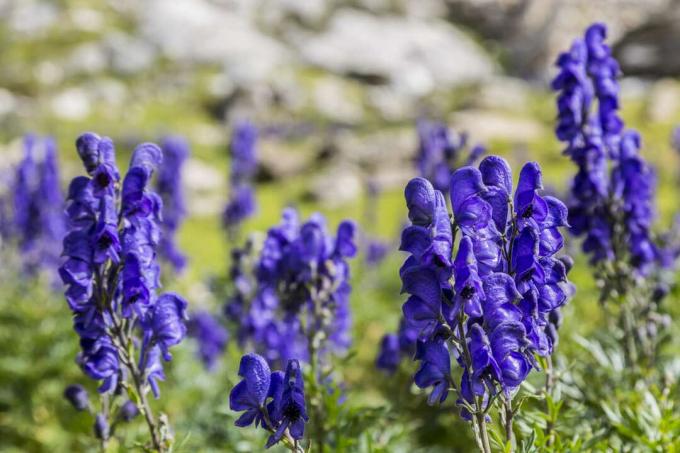Hard to believe - There are also countless plants in the garden that are poisonous for animals. Here are 10 poisonous plants your animals should avoid.

Note: Many of the plants listed below do not show any harmful properties in small doses. However, if your animal has eaten parts of the plant or shows signs of poisoning, you should definitely consult a veterinarian.
contents
- Poisonous garden plant 10: boxwood
- Poisonous garden plants 9: Lily of the valley
- Poisonous garden plants 8: Giant hogweed
- Poisonous garden plants 7: Rhododendron
- Poisonous garden plants 6: gorse
- Poisonous garden plants 5: cherry laurel
- Poisonous garden plants 4: Deadly nightshade
- Poisonous garden plants 3: Angel's Trumpet
- Poisonous garden plants 2: yew
- Poisonous garden plants 1: blue monkshood
Poisonous garden plant 10: boxwood
It is one of the most popular hedges and it is hard to imagine most gardens without it. Boxwood (Buxus sempervirens) is an integral part of German horticulture. No matter whether as a hedge, potted plant or in unusual shapes, the boxwood shines everywhere with its diversity and the evergreen leaves. Unfortunately, our darling is not suitable for animals. The plant is toxic to dogs, cats, rodents and even horses and can lead to vomiting, diarrhea and cramps. Fortunately, boxwood has a bitter taste and is avoided by most animals, so that severe poisoning with paralysis or even fatal outcome rarely occurs.
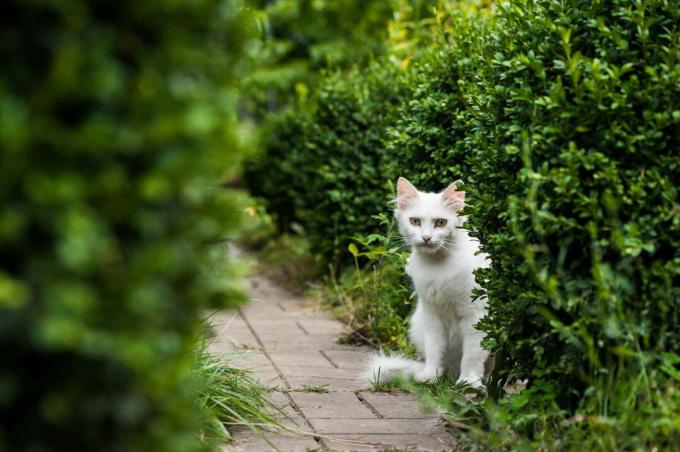
Poisonous garden plants 9: Lily of the valley
lily of the valley (Convallaria majalis) are the first heralds of spring and are very popular residents in many gardens. Its small, bell-shaped flowers in particular have something magical about them and their delicate, sweet smell makes them a popular plant for perfumes. However, while they are a useful source of food for birds and insects, humans and pets should not get away from theirs to be fooled by innocent appearances. After consumption, cardiac arrhythmias, stomach and intestinal problems and cramps occur quickly. In addition, the lily of the valley is often used Confused wild garlic, which is completely harmless and even a popular spice. You should definitely look twice here!
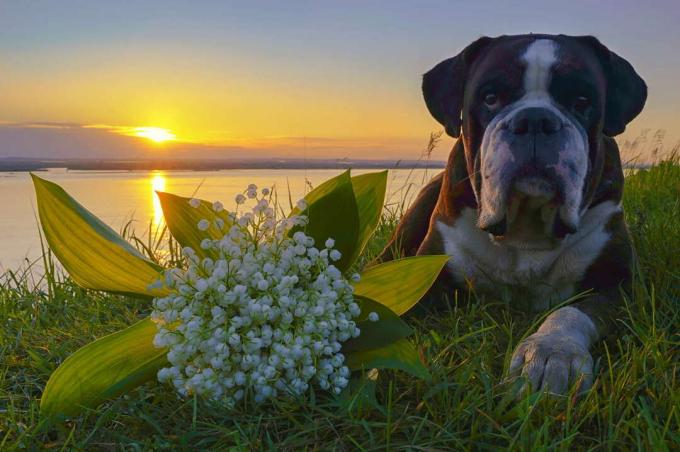
Poisonous garden plants 8: Giant hogweed
Even if it is beautiful to look at, the giant hogweed is (Heracleum mantegazziuanum) usually an uninvited guest in the garden. Nevertheless, the plant, which can be up to five meters high, continues to spread and can now be found almost all over Germany. The insidiousness of the plant in particular is so dangerous: In contrast to other plants, the hogweed has to are not eaten in order to show their harmful effects, simple skin contact is sufficient the end. The sap of the giant hogweed contains so-called furocoumarins, which have a skin-irritating effect. When exposed to sunlight, burn-like skin damage with blisters and open wounds forms. Both humans and animals can be affected by the burns. If your animal comes into contact with giant hogweed, it should be placed in the shade and the sap should be washed off with water. In the event of burns, a veterinarian must also be informed.
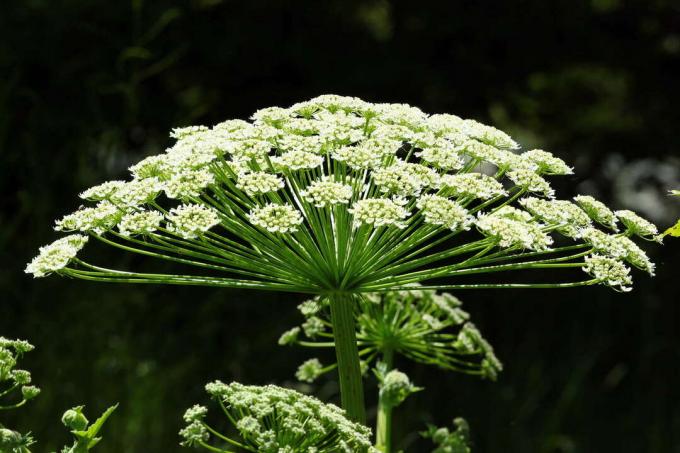
Poisonous garden plants 7: Rhododendron
Beautiful, but also demanding: The rhododendron (rhododendron) is undoubtedly one of the most important flowering shrubs in Germany. Especially its variety, but also the beautiful, large flowers make the hearts of many gardeners beat faster. There are now even parks where you can marvel at the diversity of this extraordinary bush. But with all the love you have to see the negative sides of the rhododendron: Unfortunately, the leaves of the plant in particular are poisonous. Horses and turtles, which often die a few hours after consuming the green leaves, are particularly susceptible to the poison. But dogs, cats and rodents also suffer from gastrointestinal inflammation, cramps and paralysis after consuming rhododendrons.

Poisonous garden plants 6: gorse
Summer, sun, sunshine - the gorse (Genista) has become a popular ornamental shrub with its Mediterranean flair and colorful flowers. In particular, its robustness and the little care it needs are a reason for many to give the half-height shrubs a home. Before you decide to plant gorse, however, you should think about your four-legged friends: All types of gorse are poisonous (although they vary in strength). Poisoning manifests itself in nausea, vomiting and diarrhea, but constipation and intestinal obstruction are also possible. Changes in personality and consciousness such as restlessness, excitement, paralysis or unconsciousness can also occur.
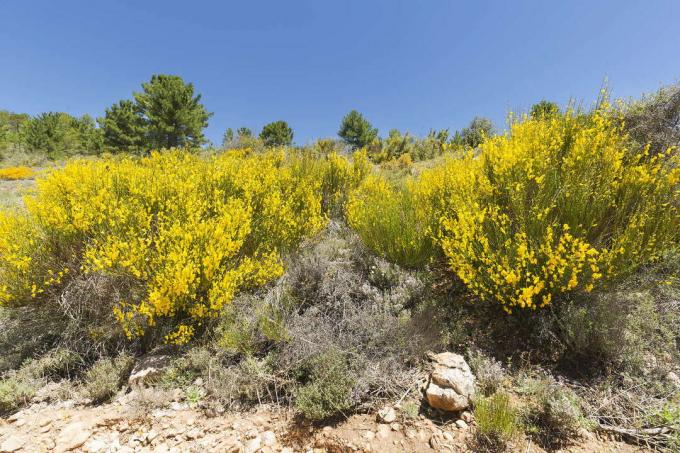
Poisonous garden plants 5: cherry laurel
Especially as Boxwood substitute has the cherry laurel (Prunus laurocerasus) made a name for itself in the past few years. But the evergreen shrub can do even more: with its white flowers and dark fruits it is Cherry laurel a real eye-catcher under the garden hedges. The taste of the fruit is also not to be sniffed at. Only cooking before snacking is compulsory, as cherries are poisonous when raw. And that is where the problem of cherry laurel lies: leaves, flowers and seeds of cherry laurel are (raw) poisonous. The fruits are particularly dangerous, as they taste pleasantly sweet and can mask the bitter taste of the seeds. That is why animals like to eat them. Poisoning with cherry laurel manifests itself in increased salivation, stomach and intestinal problems and shortness of breath.
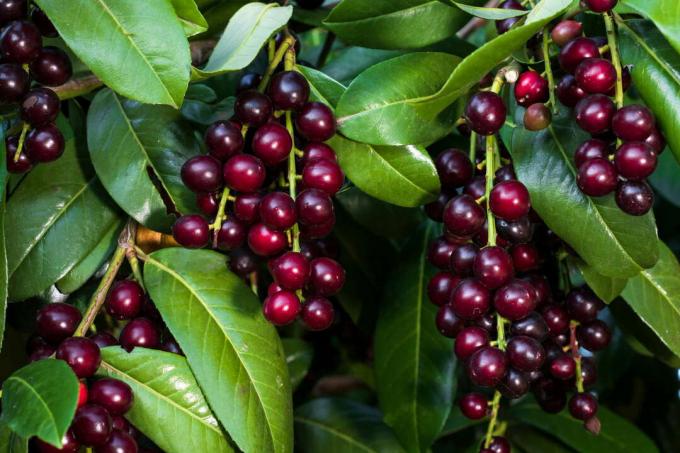
Poisonous garden plants 4: Deadly nightshade
With its dark flowers and black fruits, the deadly nightshade (Atropa belladonna) a pretty decoration in many gardens. Unfortunately, the bushy plant has absolutely nothing to do with our cherry tree: All of its parts - including the appetizing-looking fruits - are poisonous. A hallucinogenic effect can also be observed, which is why the deadly nightshade was used in the past for the manufacture of drugs. Your Latin nickname Belladonna (loosely translated: beautiful lady) the plant was obtained by formerly rich women dripping deadly nightshade into their eyes to dilate their pupils. In addition to the dilated pupils, changes in personality such as aggression or restlessness, thirst, palpitations and shortness of breath occur when deadly nightshade is poisoned. The consumption of deadly nightshade is also absolutely poisonous for animals.

Poisonous garden plants 3: Angel's Trumpet
Giant trumpet blossoms in bright colors - no wonder the Angel trumpet (Brugmansia) is still one of the most popular container plants on patios and in gardens. The beautiful exotic is also simply a real eye-catcher and, with a height of up to 4 m and the numerous flowers, can hardly be overlooked. Unfortunately, this beauty also has its downsides: The plant has a reputation for being mind-altering Have an effect and is eaten or smoked by consumers, although there is a very high risk of a fatal overdose is high. The consumption of the plant is also dangerous for animals. All parts of the plant are poisonous and, if consumed, can lead to vomiting, diarrhea, cramps, cardiac arrhythmias, shortness of breath or even cardiac arrest.
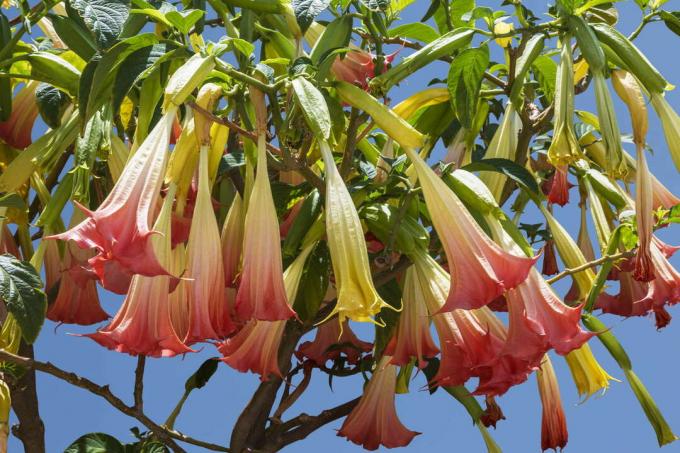
Poisonous garden plants 2: yew
Hardly any other conifer is as versatile: yew trees (Taxus baccata) are suitable as a single tree and hedge plant, but the plant also has a long tradition as a topiary. The yew tree is still used frequently today, after all, it is easy to care for, robust and forms opaque hedges. Unfortunately, almost all parts of the plant are highly toxic. The needles and seeds in particular, which are located in the bright red fruits, contain taxine. This leads to vomiting, nausea, dizziness and dilated pupils. Finally, unconsciousness follows and it is not uncommon for the heart to stop after a few hours. Therefore, the plant should not be grown near animals and the veterinarian should be informed immediately if poisoning is suspected.
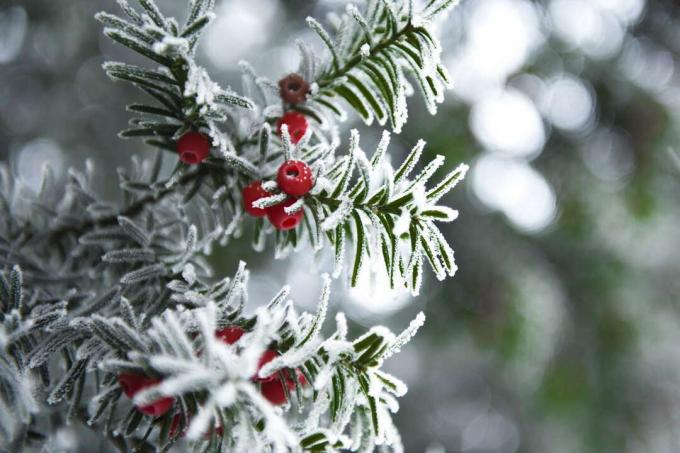
Poisonous garden plants 1: blue monkshood
It is not for nothing that the blue monkshood adorns (Aconitum napellus) first on our list - it is the most poisonous plant in Europe. The plant with the beautiful blue flowers may look nice, but it has it all behind its ears: Already a few grams of the root is fatal to a human being; in dogs, a fatal dose of five is assumed Gram off. But even the mere touch can lead to discomfort, because the toxin aconitine is also absorbed through the skin. Typical symptoms of poisoning after contact or consumption of the monkshood are vomiting, diarrhea, cramps, cardiac arrhythmias and respiratory paralysis. Although the plant has a long tradition in many gardens, it should never be planted near animals or young children. If your animal does come into contact with the plant, it is advisable to visit the nearest veterinarian immediately.
